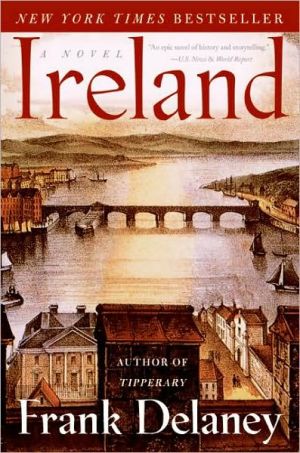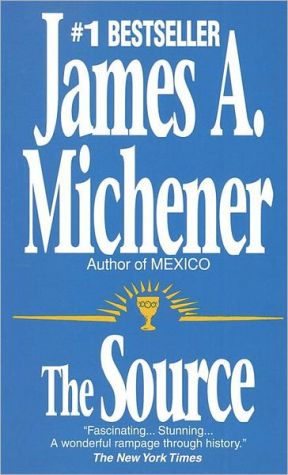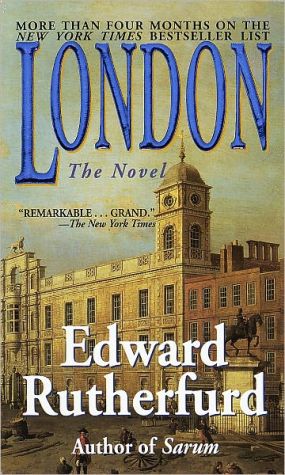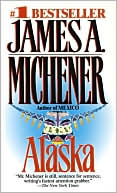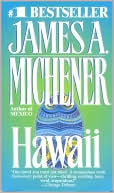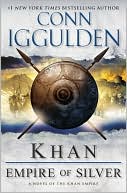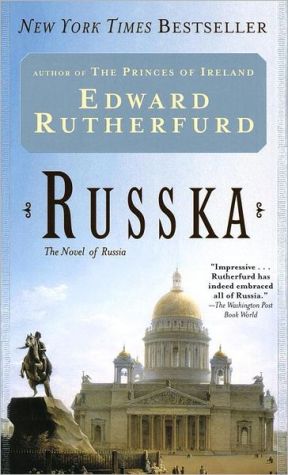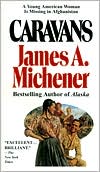Ireland
In the winter of 1951, a storyteller, the last practitioner of an honored, centuries-old tradition, arrives at the home of nine-year-old Ronan O'Mara in the Irish countryside. For three wonderful evenings, the old gentleman enthralls his assembled local audience with narratives of foolish kings, fabled saints, and Ireland's enduring accomplishments before moving on. But these nights change young Ronan forever, setting him on a years-long pursuit of the elusive, itinerant storyteller and the...
Search in google:
In the winter of 1951, a storyteller, the last practitioner of an honored, centuries-old tradition, arrives at the home of nine-year-old Ronan O'Mara in the Irish countryside. For three wonderful evenings, the old gentleman enthralls his assembled local audience with narratives of foolish kings, fabled saints, and Ireland's enduring accomplishments before moving on. But these nights change young Ronan forever, setting him on a years-long pursuit of the elusive, itinerant storyteller and the glorious tales that are no less than the saga of his tenacious and extraordinary isle.The Washington Post - Bill SheehanThe stories of Irish history are familiar but still stirring, and Delaney brings a fresh perspective and a depth of understanding to the telling. His detailed grasp of Irish history lends weight and authority to this long, discursive tale. At the same time, his familiarity with every aspect -- social, cultural and economic -- of Irish society, his empathetic rendering of a varied cast of real and imagined characters, and his ability to convey the intricate beauty of the Irish countryside enrich the narrative at every turn. Mostly, though, the novel draws its power from Delaney's conviction that stories matter, giving shape and meaning to our otherwise fractured personal -- and national -- histories. The troubled history of Ireland makes a particularly memorable story. Delaney tells it very well indeed.
HOW THE HARP WAS INVENTED\ Here in Ireland we've received most of our inner riches from Mother Nature. In olden days, the monks in the abbeys made art from natural matters. They were inspired by the sights they saw every day -- a rabbit leaving its burrow; a fox running across a hillside with its red brush of a tail streaming out behind it; a horse standing in a field, its back to the rain; a hawk making its point far up in the sky. And even their painting materials also came from the non-human world -- bird's feathers and colors from the earth.\ So: all our expression, all our means of saying what's in our souls, came first from the universe that we see every day all around us, out under the air. We were not alone in this. For example, Man made his first music from blowing air through reed pipes and kept rhythm by tapping a stick on another stick.\ But here in Ireland we made music from one very unusual source. It's our greatest musical instrument, it's very contrary to play and it had its roots in the sea. This is the story of how we invented -- the harp.\ Once upon a time, before swans learned to swim and before bears wore fur coats, the wife of Breffni O'Rourke, a Sligo chieftain, liked to walk the sands at Rosses' Point. She enjoyed looking out over the Atlantic hoping to see whatever glories might lie far away to the west. As she walked she listened to the crawk of the gulls, the hiss of the tide, the ocean's hush.\ One morning, however, she heard a new sound. It was strange and wondrous, it was a melody so tinkling and beautiful she thought she must capture it forever. She looked around to see where it came from -- but nobody walked near her, the sands stretched white and empty and she could not find the source of these harmonies.\ It was all very peculiar. The noise grew louder and then fainter and then louder and then fainter. She asked herself, "What comes and goes, and then comes again and then goes again?" After a moment's thought, she found the answer rising in her brain -- the wind! The wind comes and goes, and comes again and goes again. So the Lady Breffni looked in the direction the wind was coming from and she found the source of the glittering tunes.\ On the sands of Rosses' Point, near the original Coney Island, lay the beached carcass of a whale, high and white like a monument. The silver noises she heard came from the ribcage, where the sea breezes danced through the bones. For many minutes the lady stood and watched and listened to sounds that moved her to tears. She returned enthralled to her castle and immediately summoned her musicians who played every night at supper.\ "Visit straightaway the sands at Rosses' Point," she instructed them, "and listen to the sound of the wind in the bones of the whale and then come back here and devise a means of making that music."\ The musicians mounted their horses, rode off to the beach and dismounted by the carcass. They also found the sound enchanting and they spent hours there that day, scratching their heads, walking north, south, east and west of the white shape, trying to divine how the music was caused. What structures, they asked, what tensions would be needed to create something so lovely? Like scientists, somber and grave, they debated and they questioned and they considered.\ On their return to the court, they began work immediately with Breffni O'Rourke's carpenter. Some weeks later they produced a very large, ponderous-looking, wooden instrument with long thin staves running from top to bottom across a frame curved like a whale's ribcage. They wheeled this contraption into the castle yard and, as good fortune would have it, the wind blew from the west that very day. To their great delight, their instrument made sounds even more beautiful than the carcass of the whale.\ Next, they wheeled it around to the front door of the castle and sent a messenger to tell the lady her music was ready. She emerged at once and could hear the melody as she approached; in fact all the people in the castle turned out when they heard these heavenly notes. As they stood and listened, some people felt that a miracle had come to the great house of Breffni O'Rourke.\ But -- there were two problems. First of all, this instrument was as big as a van and the lady pointed out that she could only listen to it in the open air; it wouldn't fit through the castle door and, like the rest of Ireland, Sligo isn't a place where you can listen to music out of doors all the year round. The second point she made -- it was now late afternoon and after a time, as the sun began to sink in the west, the wind dropped. And, of course, the music ceased. The Lady Breffni looked at the musicians and said, "Where's my music?"\ They replied quite reasonably that the instrument only played when the wind blew, to which she said, "Then how am I going to hear it when we sit to dine?"\ The musicians looked at the carpenter and the carpenter looked at the musicians.\ "Place it in the yard outside an open window of the dining-hall," suggested the carpenter, trying to solve two problems at once.\ "But the wind may not always blow through that corner of the yard," answered the lady. "And if it does, it'll make the room too cold to sit in."\ One of the musicians said, "Perhaps if the carpenter were to make some bellows, like a blacksmith uses for blowing on the fire?"\ "I don't want a blacksmith's bellows inside or outside the banqueting hall," said the Lady Breffni. "Are you all dolts or something?" She was cross by now.\ A child wandered forward, a boy of nine or so, blond and inquisitive. He leaned in to look at the great instrument, reached out to touch it and drew his fingers across the long, tall staves. But he pulled back his hand with an expression of distaste on his face.\ "I'm surprised the wind wants to play this," he said.\ He was the son of Lady Breffni's housekeeper and renowned in that house for his cleverness and powers of observation. The musicians knew him well because he spent a great deal of time listening to them and observing how they played; one of them had begun to teach him the whistle.\ "What's wrong with it?" asked the carpenter.\ The boy thought for a moment.\ "It's too -- unfriendly," he said, after struggling to find the word. "These wooden bones -- they offer no welcome."\ "And what would you find welcoming?" asked one of the musicians.\ "Something easy, a supple thing," the boy said. "Something that would bend to the fingers. Then you wouldn't need the wind. Any of us could learn to play it."\ "But how would that make music?" asked the carpenter.\ "These don't make the music," said the boy, indicating the wooden slats. "The music is made down here, where the vibrations echo from the blown bones" - and he laid his hand on the broad frame of the instrument.\ "He's perfectly right," said the musicians.\ "And it could be a lot smaller," said the boy, "provided the box was deep enough to reverberate." They carried the huge instrument away, removed the wooden staves and replaced them with long strings of gut taken from the stomachs of cows and waxed with the grease of a goose. It took them no more than a few hours. They wheeled it back into the castle yard and that night, the Lady Breffni O'Rourke of Sligo sat down to dinner, listening to music that seemed even sweeter than that melody she had heard in the skeleton of a whale. Next day, they made a much smaller version and brought into the castle that very night. It was even sweeter than the first. And that, my friends, is how the harp was invented.\ Did you know, by the way, that Ireland is the only nation on earth to have a musical instrument as its national symbol? Canada has the maple leaf; New Zealand has the silver fern; Scotland has the thistle; England has the rose; Wales has the leek; America has the eagle -- and Ireland has the harp.
\ Edward Rutherfurd"A remarkable achievement....Frank Delaney has written a beautiful book."\ \ \ \ \ Jack Higgins"An absolute masterpiece. With this extraordinary novel Frank Delaney joins the ranks of the greatest of Irish writers."\ \ \ Washington Post"History, legend, memory and myth come seamlessly together in Frank Delaney’s wonderfully engaging new novel, Ireland."\ \ \ \ \ Connecticut Post"Extraordinary … Delaney is such a fabulous storyteller that the 560 pages fly by."\ \ \ \ \ Entertainment Weekly"Delaney gracefully collects essential myths—and invents a few, too—in his heartfelt ode to the oral tradition."\ \ \ \ \ Hartford Courant"Delaney has written an epic novel on the history of Ireland....He’s a born storyteller."\ \ \ \ \ Richmond Times-Dispatch"Miraculous ... As befits its title, IRELAND touches the heart and moves the soul."\ \ \ \ \ U.S. News & World Report"An epic novel of history and storytelling."\ \ \ \ \ The Guardian"If you’re a lover of Irish myths and history, there are rich pickings here."\ \ \ \ \ Philadelphia Inquirer"Dramatic, adventurous, heroic, romantic, slyly comic ... imaginatively [tells] the history of Ireland."\ \ \ \ \ San Antonio Express-News"In the end, IRELAND is, as the Irish themselves are fond of saying about everything from cabbage to castles, brilliant."\ \ \ \ \ Entertainment Weekly“Delaney gracefully collects essential myths—and invents a few, too—in his heartfelt ode to the oral tradition.”\ \ \ \ \ Washington Post“History, legend, memory and myth come seamlessly together in Frank Delaney’s wonderfully engaging new novel, Ireland.”\ \ \ \ \ Philadelphia Inquirer“Dramatic, adventurous, heroic, romantic, slyly comic ... imaginatively [tells] the history of Ireland.”\ \ \ \ \ The Guardian“If you’re a lover of Irish myths and history, there are rich pickings here.”\ \ \ \ \ Hartford Courant“Delaney has written an epic novel on the history of Ireland....He’s a born storyteller.”\ \ \ \ \ U.S. News & World Report“An epic novel of history and storytelling.”\ \ \ \ \ Richmond Times-Dispatch“Miraculous ... As befits its title, IRELAND touches the heart and moves the soul.”\ \ \ \ \ Connecticut Post“Extraordinary … Delaney is such a fabulous storyteller that the 560 pages fly by.”\ \ \ \ \ San Antonio Express-News“In the end, IRELAND is, as the Irish themselves are fond of saying about everything from cabbage to castles, brilliant.”\ \ \ \ \ Bill SheehanThe stories of Irish history are familiar but still stirring, and Delaney brings a fresh perspective and a depth of understanding to the telling. His detailed grasp of Irish history lends weight and authority to this long, discursive tale. At the same time, his familiarity with every aspect -- social, cultural and economic -- of Irish society, his empathetic rendering of a varied cast of real and imagined characters, and his ability to convey the intricate beauty of the Irish countryside enrich the narrative at every turn. Mostly, though, the novel draws its power from Delaney's conviction that stories matter, giving shape and meaning to our otherwise fractured personal -- and national -- histories. The troubled history of Ireland makes a particularly memorable story. Delaney tells it very well indeed.\ — The Washington Post\ \ \ \ \ Publishers WeeklyBBC reporter Delaney's fictionalized history of his native country, an Irish bestseller, is a sprawling, riveting read, a book of stories melding into a novel wrapped up in an Irish history text. In 1951, when Ronan O'Mara is nine, he meets the aging itinerant Storyteller, who emerges out a "silver veil" of Irish mist, hoping to trade a yarn for a hot meal. Welcomed inside, the Storyteller lights his pipe and begins, telling of the architect of Newgrange, who built "a marvelous, immortal structure... before Stonehenge in England, before the pyramids of Egypt," and the dentally challenged King Conor of Ulster, who tried, and failed, to outsmart his wife. The stories utterly captivate the young Ronan ("This is the best thing that ever, ever happened"), and they'll draw readers in, too, with their warriors and kings, drinkers and devils, all rendered cleanly and without undue sentimentality. When Ronan's mother banishes the Storyteller for telling a blasphemous tale, Ronan vows to find him. He also becomes fascinated by Irish myth and legend, and, as the years pass, he discovers his own gift for storytelling. Eventually, he sets off, traversing Ireland on foot to find his mentor. Past and present weave together as Delaney entwines the lives of the Storyteller and Ronan in this rich and satisfying book. Agent, Ed Victor. (Feb.) Copyright 2004 Reed Business Information.\ \ \ \ \ Library JournalOn a November evening in 1951, a shanachie (storyteller) visits the rural Irish home of the O'Maras, where neighbors have gathered to hear his tales of Ireland's heroism, intrigue, and bloody grandeur. Nine-year-old Ronan is captivated by the old man and drawn to his life of itinerant story gathering. As best he can, young Ronan follows the traveler over the years, collecting his stories while earning a history degree in Dublin. As Ronan and the shanachie grow closer, the young man fantasizes about a life on the road and, for a time, tries to emulate his hero, walking the fields and living on the kindness of strangers. The retelling of the great legends as "true events" may require a few imaginative leaps on the part of the reader, but the bonding between the apprentice and the master is both touching and real. An accomplished historian and novelist, Delaney (The Sins of the Mother) deftly weaves the story of a people and a country with a poignant coming-of-age tale; fans of Edward Rutherford's historical sagas will love it. Highly recommended for all Irish fiction collections. [See Prepub Alert, LJ 10/15/04.]-Susan Clifford Braun, Aerospace Corp., El Segundo, CA Copyright 2004 Reed Business Information.\ \ \ \ \ Kirkus ReviewsA vivid rendering of Irish history, imagined and real, embracing "blood and bones, legends, guns, and dreams, Catholics, Protestants, England, horses and poets and lovers."Any novel not meant for children that opens with a character called the Storyteller and praises at length the necessity of the Storyteller's art runs the risk of calling undue attention to its author, who is, after all, the real teller. Throw Hibernia into the mix, and the danger of hokum and, worse, goopy sentimentality (for which see Malachy McCourt's History of Ireland, p. 851) mounts. Thankfully, former BBC reporter Delaney steers clear of mawkishness and seems much less interested in calling attention to himself than in emphasizing the importance of the oral tradition to Irish memory and writing; his Storyteller may smoke a pipe and charm the country people with wee yarns that unfold into vast epics, but the rest of his characters are as real as can be, quick to take up arms against Vikings or Brits or one another, quick to strike up a song and take a drink while resisting the cliches to which people who fight and sing and drink lend themselves. Delaney's sprawling narrative takes in the time of King Conor of Ulster and Saint Patrick, the Battle of the Boyne and the building of Newgrange "before Stonehenge in England, before the pyramids of Egypt," the Easter Uprising and the Troubles of more recent times. Delaney keeps a close eye on plot and connects past and present with subtle, writerly touches: a wild man with tawny hair fights a bear in the misty prehistoric past, then resurfaces, 50 centuries later, to die in the ruins of the Dublin post office, while the Irish landscape itself becomes a key character whosepresence spans the centuries, reminding the reader just why the little island should have inspired so much writing to begin with. Reminiscent of the best of James Michener in scope and sheer crowd-pleasing potential. Agent: Ed Victor/Ed Victor Ltd.\ \
